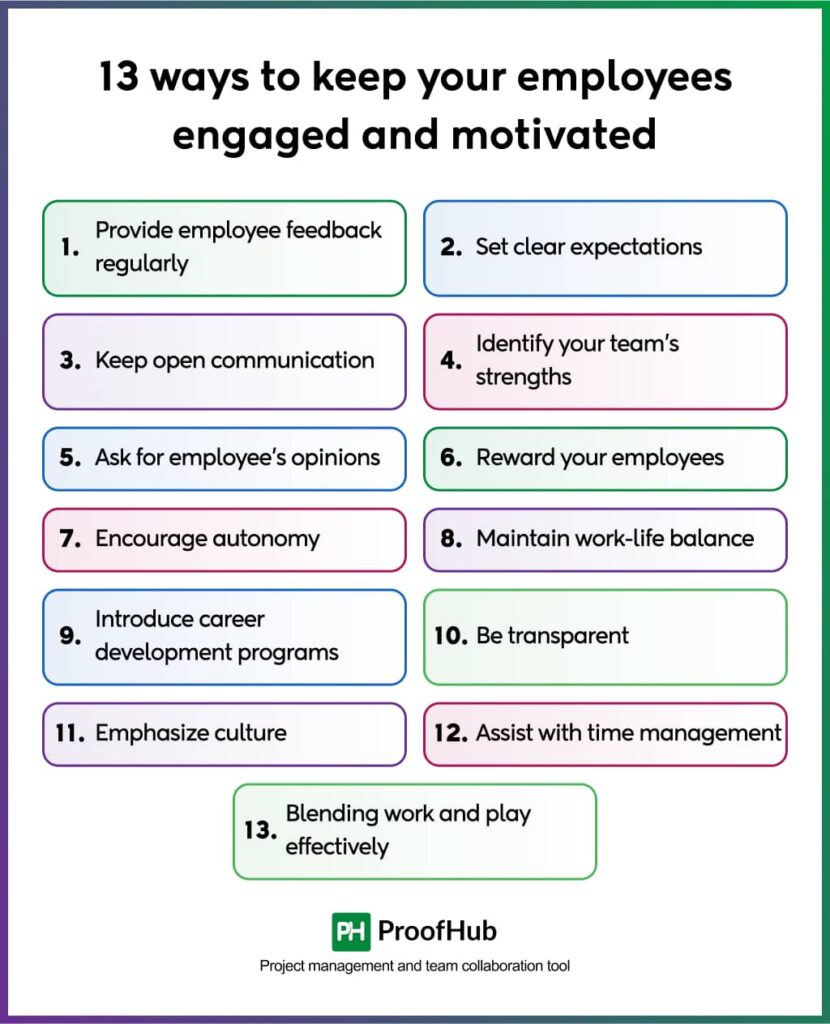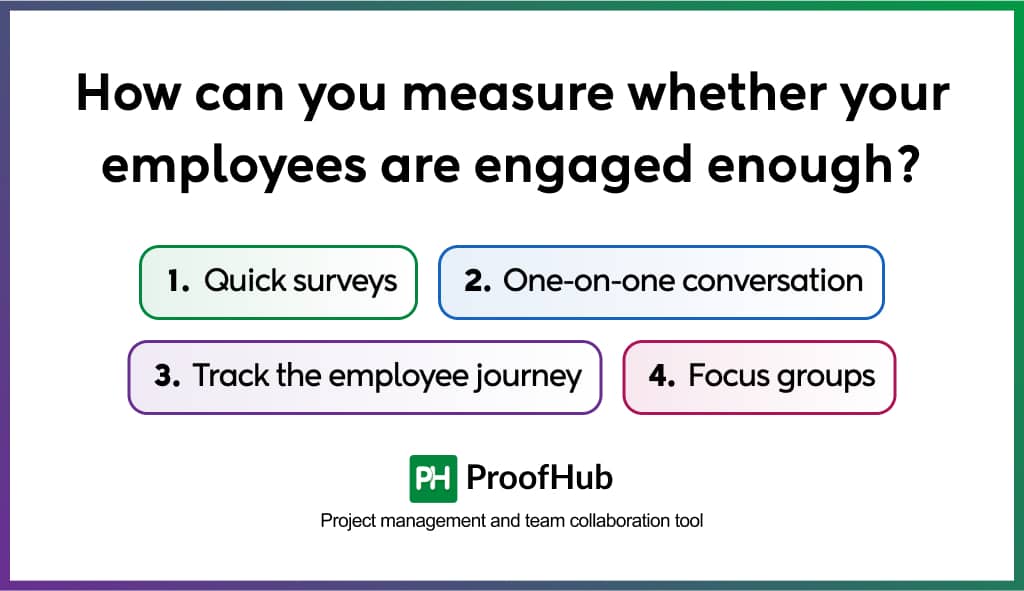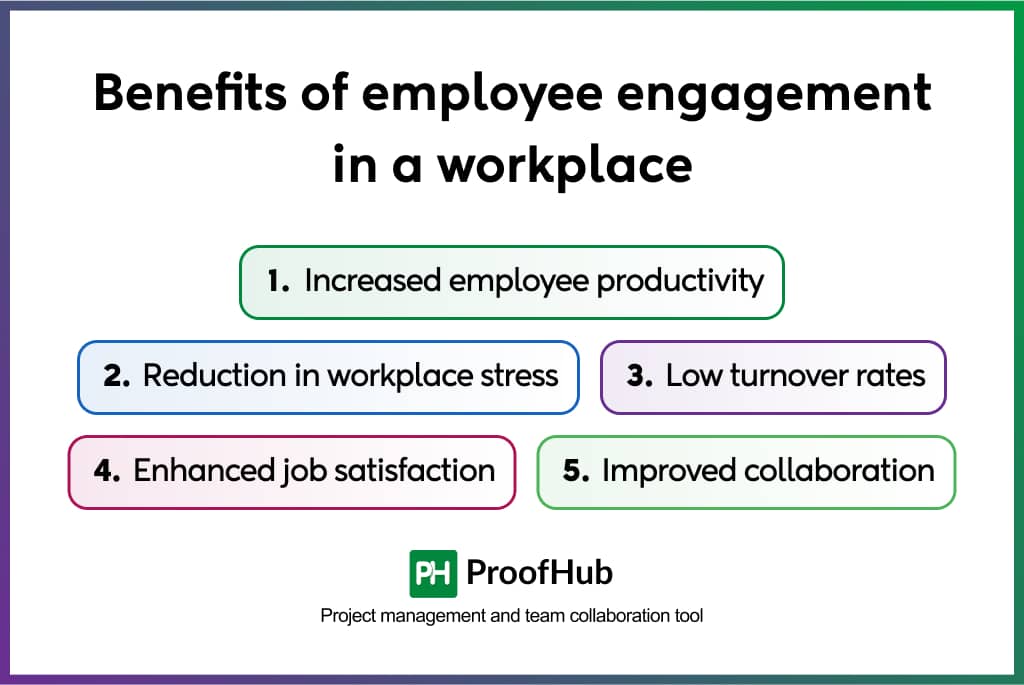Employee engagement is more than a buzzword, it’s the foundation of productive, motivated, and high-performing workplaces. When employees find meaning in their work and feel connected to the company’s goals, they don’t just show up, they contribute with energy, purpose, and innovation.
But what happens when that spark fades?
You’ve likely seen the warning signs: another mid-morning coffee break, blank stares at computer screens, and endless scrolling during work hours. You are not alone. According to a recent Gallup study cited by Forbes, only 21% of employees are truly engaged at work, costing businesses billions in lost productivity.
This leads to a question that every manager asks at this point: “How to keep employees engaged?”
After more than a decade leading teams, I have learnt that engagement doesn’t require complicated programs. It needs authentic leadership and practical strategies.
Managers who read this article will gain an understanding of the core concepts of employee engagement and effective approaches that will help them transform their team’s engagement levels, regardless of the industry they belong to.
What is employee engagement?
Employee engagement refers to the assessment of the involvement and enthusiasm of employees in the workplace. It is more than mere job satisfaction and workplace happiness, it is something more than that. When employees are happy, they enjoy their work, but engaged employees care. They take ownership and contribute to the organization in ways more than anticipated.
Learn what leaders can do differently in 2025 to engage employees more with your organization.
Top 13 ways to keep your employees engaged and motivated
Let’s face it! Disengagement is expensive. When employees zone out, productivity drops, turnover rises, and morale suffers. You’ve seen the signs: the constant coffee breaks, the distracted scrolling, the lack of enthusiasm.
But team engagement isn’t about grand gestures or costly perks. It’s about simple, consistent actions that make employees feel valued, heard, and motivated. It can be easily improved through simple yet effective practices.
Here are some practical tips to improve team engagement!

1. Provide employee feedback regularly
Giving your employees feedback is one of the major yet undermined methods. When employees are aware of how their work is performing and where they can grow, it is beneficial. Even better? They come up with solutions to the table once they understand the challenges. The 360-degree feedback is the best way to ensure employees stay engaged because they will get to know everyone’s perspectives.
Encourage self-reflection, too. Ask employees to share their own aspirations and evaluate whether their personal goals align with the team’s goals.
2. Set clear expectation
As a manager, you must be clear in your expectations when you assign a project or task to someone. Employees tend to be more engaged when they know what is expected of them. This can help them make a list of goals that they can visit to stay on track and keep them on the same page as you.
Regular check-ins and progress tracking can prevent confusion, and timely course corrections can be made before it’s too late in the game.
3. Keep open communication
There needs to be an impactful culture of open comments and communication; for instance, the globally allotted group can be added for a daily video call to celebrate the latest successes and collect guidance for challenges. The key performance indicators must be determined through dialogue with employees and should be transparent and open to all.
Communicating openly is one of the best strategies to boost employee engagement by fostering trust, transparency, and a sense of belonging. Employees feel engaged when they feel comfortable that their thoughts and ideas will be heard and valued.
4. Identify your team’s strengths
You may have seen employees often enjoy work that aligns more with their strengths and interests. As a manager, it is your responsibility to identify everyone’s strengths and delegate responsibilities accordingly. When you delegate tasks based on individual strengths, it improves performance, and your team feels more valued and motivated.
When you identify your team’s strengths, you can easily spot who’s engaged and who might need a new challenge or role to work with their passion. Remember, empowered people do exceptional work. The more you play to their strength, the more they will show up with energy, ownership, and pride in everything they are working on.
5. Ask for employees’ opinions
When you ask for your employee’s feedback anonymously, they voice their concerns in a better way. By doing this, you will get a better understanding of what your employees think and what things are concerning them.
Asking for feedback will allow you to make changes to improve employee engagement.
6. Reward your employees
In psychology, there is a term called “positive intermittent reinforcement,” which refers to the reaction of the mind in which any human being, if rewarded for a small achievement, gets inspired to do more. As a manager, what you can do is reward your employees when they complete their goals, or complete their goals by celebrating as a team, or giving them some token of appreciation.
Rewarding your employees regularly can help lower attribution rates over the long term and eventually increase the productivity of the company.
7. Encourage autonomy
Autonomy over their tasks and projects can make employees more engaged with the organization. When employees are in charge of their tasks and projects, they tend to be more accountable, responsible, and invested in their own work.
Along with autonomy, you can inspire your employees to take charge and lead the team. This can help team members develop their leadership skills, which will help them in their future.
8. Maintain work-life balance
When organizations respect their employees’ time and maintain a boundary between working and non-working hours, it keeps employees engaged. Being a manager, you must maintain a healthy work-life balance through flexible work arrangements, clear boundaries, and support for personal well-being to enhance overall engagement and productivity.
A healthy work-life balance can help reduce stress and burnout and improve the physical and mental health of employees.
9. Introduce career development programs
Nothing more than career development programs can entice employees to get more involved. When you invest in career development programs, you help employees find their long-term goals within the company.
As their leader, you must provide them with the resources and training developments they need to meet such goals.
10. Be transparent
A trust factor plays an important role between employees and management. It has a direct correlation with employee happiness. Without transparency, employees will lack emotional commitment, and this leads to trust. Give your employees a sense of ownership and deeper investment in the company.
A culture that gives transparency some value breeds engaged employees.
Also read: Why workplace transparency is important and its benefits
11. Emphasize culture
What kind of culture engages employees in an organization? There is a thing called bad culture or good corporate culture that influences various employee outcomes. Emphasizing culture will give a clear picture of how your organization is running and accelerate your business performance.
Just as the little phrase, “Your vibe attracts your tribe”, your company culture will attract those who will be comfortable in that culture, which will lead to a higher level of engagement.
12. Assist with time management
Time management is not a personal thing to look at. You need to fill the gap for your employees to overcome the challenge of managing time. It leaves an impact on everything in your business, including ‘employee engagement’. Provide collaborative tools to help your employees with their path to success by managing their time.
Your employees will no longer struggle with time management and will be more engaged in a better way for the company.
13. Blending work and play effectively
One of the declared enemies of employee participation at work is the monotony of overlying tasks in a row. So, blending work with small fun activities for employees can transform a workplace a long way. Fun activities – indoor or outdoor- will make your employees happy, and they will have fun at what they do.
Give them a break, and do something engaging, and they will feel alive and contribute more to the organization. Also, they will feel more comfortable taking meaningful steps in their tasks with a fresh mind.
Why does employee engagement matter?
“Employees who believe that management is concerned about them as a whole person not just an employee are more productive, more satisfied, more fulfilled. Satisfied employees mean satisfied customers, which leads to profitability.”~ Anne M. Mulcahy, the former CEO of Xerox
Employees involved with an organization are growth drivers. Having employees who are engaged plays an important role in the organization because it creates a better work culture, increases productivity, reduces staff turnover, and enhances the company’s profits.
Engagement at the workplace is essential for both:
- People at work: Employees who feel engaged have great job satisfaction and experience. They tend to put great effort into achieving what is expected of them.
- Company level: The business operations and profitability are directly proportional to workforce engagement. If employees are highly engaged, they contribute to more growth.
What drives employee engagement?
According to a Gallup survey, employees engaged with an organization are more likely to be more productive and pave the way for the organization’s growth.
Some of the factors that help foster workforce engagement in a workplace involve great communication, leadership quality, opportunities for professional growth, a positive work environment, and rewards and recognition.
Today, we live in an internet-ruled world, where a person’s anxieties, self-doubt, and sense of belonging can be easily triggered. Making employees feel good about what they are doing becomes important in such times.
Managers who focus on employee well-being and appreciate their achievements tend to create a work environment that makes them feel good and positive about their work. But the three major principles on which the engagement of a workplace depends are:
- Promoting clear communication
- Investing in people
- Create an inclusive culture
How can you measure whether your employees are engaged enough?
Once you implement the aforementioned practices in your organization, you will want to measure whether your employees are engaged enough. When you measure employee engagement, you get to spot the strengths and problem areas, create transparency, and you can find ways to build trust with employees. There are various ways in which you can measure whether your employees are engaged or not.

1. Quick surveys
You can share the survey links with a few open-ended questions so your employees can quickly share their opinions. In addition, you get to see what areas you need to improve as a manager.
2. One-on-one conversation
Instead of annual review meetings, you can arrange one-on-one meetings with your employees to exchange feedback. This can help the managers maintain a healthy relationship with their employees and thrive in a culture where they feel valued and appreciated.
3. Track the employee journey
Exit interviews are really popular among organizations to track the employee journey and get an honest review. It has proven to be a useful strategy in order to measure employee experience in a workplace. You must collect feedback from every stage of the employee experience so you can further build a satisfying experience.
4. Focus groups
This is a way to measure team engagement that is crafted for those organizations where one-on-one discussions are not possible. What you need to do is choose employees from different departments and make a focus group, and ask them questions to get engagement-focused insights.
Benefits of employee engagement in a workplace
Workforce engagement is crucial for both employees as well as employers as it will help in increased productivity, improved retention, enhanced job satisfaction, and many more. The following are some of the benefits that can help in engaging employees-

1. Increased employee productivity
When employees are engaged in their work, they are likely to produce high-quality work and become more accountable. Because they are personally invested in the job and their performance matters to them, which leads to increased productivity of the whole team.
2. Reduction in workplace stress
Stress is an inevitable part of work, but how you manage it is the major question. For engaged employees, stress can become a motivator instead of a stress booster. When disengagement prevails, stress multiplies and can be quite detrimental to employees’ health.
3. Low turnover rates
High workplace engagement can accelerate employee retention rates. When employees feel involved, they tend to offer their valuable knowledge and skills without stalling. It helps in reducing long-standing employee leave.
4. Enhanced job satisfaction
Satisfied employees tend to be more motivated and productive. When a manager fosters an environment of engagement by recognizing them for their achievements, providing regular feedback, and creating a culture of trust and respect, it helps in improving employee job satisfaction.
5. Improved collaboration
Employees who feel connected to their organization collaborate effectively with their colleagues. An enhanced sense of engagement will help you foster a sense of belonging, increasing individual and team productivity.
What are the common causes of disengagement at work?
There are several reasons that cause employee disengagement in a workspace, but one common cause is a lack of clarity. When the job responsibilities, expectations, and goals are ambiguous, employees tend to disengage. Another major reason is misaligned leadership, when leaders operate from head and heart but fail to take action. In this scenario, the team notices that the actions don’t match the words.
Other significant reasons for team disengagement could be managers hovering over employees’ seats for project updates, a lack of autonomy, and insufficient recognition. In other words, disengagement is less about the work itself and more about the conditions in which it is done.
In what ways ProofHub can help in employee engagement?
As a manager, it is your responsibility to find the challenges faced by employees and implement the engagement strategy of your organization. The question here arises: Are there any employee engagement software tools in the market?
The answer is a simple yes. If you are looking for something that can become your helping hand in fostering the engagement of employees in your company, ProofHub is the perfect solution for you, It is a project management and team collaboration software. This tool will help you delegate tasks, provide real-time feedback, keep every member involved in the project in the loop, and encourage employee autonomy.
Additionally, ProofHub can help you highlight the most important priorities through task labels and deadlines, track progress with visual project timelines, and reduce confusion with centralized communication. ProofHub empowers teams with clarity, accountability, and autonomy, which are the key drivers of engagement in the workplace.
With several features like announcements, group chat, discussions, time tracking, and document sharing, it becomes easier for managers to build transparency, recognize achievements, and create a culture where every team member feels valued and motivated. Simply put, ProofHub equips managers with the tools they need to transform disengaged teams into high-performing, inspired contributors.
Frequently asked questions
What are some signs of a disengaged employee?
Disengaged employees often show low enthusiasm, frequent absenteeism, missed deadlines, minimal participation in meetings, lack of initiative, and a general disinterest in team goals or feedback.
How does a positive workplace culture directly impact engagement at a workplace?
A positive culture fosters trust, recognition, and a sense of belonging, making employees feel valued, motivated, and more connected to their work and the organization’s mission.
How does communication affect employee involvement levels?
Open, clear, and consistent communication builds trust, aligns goals, and ensures employees feel heard, leading to higher engagement, stronger collaboration, and fewer misunderstandings.
What is the difference between employee engagement, employee retention, and employee motivation?
The difference between them is:
- Employee Engagement is the emotional and mental connection employees have with their work.
- Employee Retention refers to an organization’s ability to keep its employees over time.
- Employee Motivation is the drive or willingness of employees to perform and achieve goals.
While they’re interconnected, engagement fuels motivation, which in turn supports retention.

